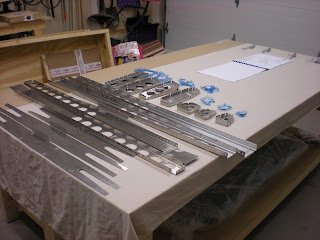Misaligned holes, or rookie mistake?

I have been riveting my HS, and have run into a bit of a snag: Note the bent metal. This is where the two front spar channels meet. I had some hole alignment issues on my first try, so I unclecoed and reclecoed everything, and things went better at first, and a number of rivets are indeed set: But then I noticed the above, possibly a little later than I should have. The remainder of the rivets to set on that side of the HS will not go in (See the two matching rows of clecoes below, on the flanges of the spar). Note how the "top" ones are set. There is some misalignment left, however small, and I can't proceed further without having to do some things I'm not sure about at this point. Thoughts so far: One solution i could contemplate: match-drill/ream the problematic holes, and just keep going. Once the two holes where the bend is situated are "used" (to attach to the airframe I presume), it might all end up solid enough. The holes

